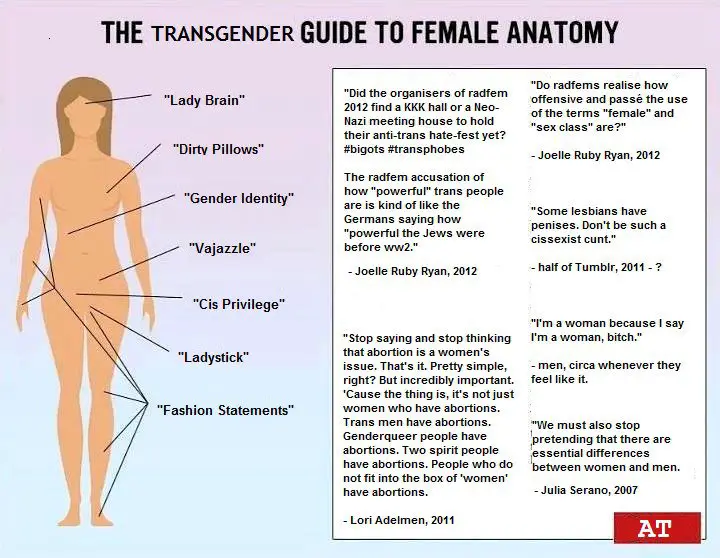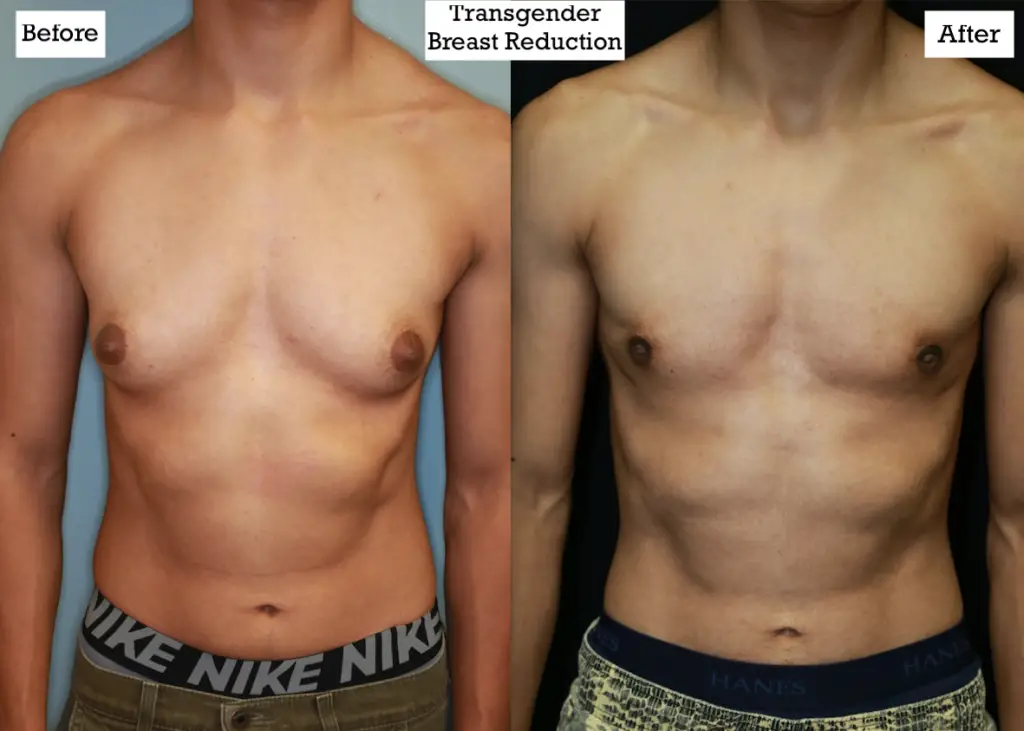Understanding how transgender genitals look is an important aspect of respecting and supporting transgender individuals during their gender transition. Transgender people have a gender identity that differs from the gender they were assigned at birth, and gender transition is a process that involves various steps, including medical procedures. This article aims to explore the physical appearance and characteristics of transgender genitals, shedding light on the diverse range of transgender anatomy and the variations that can exist. In addition, we will delve into the specific surgical procedures involved in female-to-male gender-affirming surgeries, such as metoidioplasty, phalloplasty, and scrotoplasty. It is crucial to understand the risks, benefits, and recovery process associated with these surgeries, emphasizing the importance of working with qualified professionals and following proper recovery guidelines. By increasing our knowledge and understanding of transgender genitals, we can provide better support and respect to transgender individuals throughout their journey. To visually enhance this article, . Let’s embark on this important exploration together.
Transgender anatomy encompasses a wide range of variations and diversity in terms of genital appearance and characteristics. Understanding these differences is crucial for promoting inclusivity and providing appropriate support to transgender individuals. Gender transition involves a series of steps, including hormone therapy and, in some cases, gender-affirming surgeries.
When it comes to transgender genital variations, it’s important to recognize that not all transgender individuals undergo surgical procedures to align their physical characteristics with their gender identity. Some may choose hormone therapy alone, while others may opt for specific surgeries.

One common surgical procedure is metoidioplasty, which involves releasing the clitoral ligament to enhance the size of the clitoris. This procedure can result in a phallus-like structure that may allow for urination while standing. Another option is phalloplasty, where a phallus is constructed using tissue grafts from other parts of the body. Scrotoplasty, on the other hand, involves creating a scrotum to simulate a more masculine appearance.
Each procedure carries its own set of risks and benefits, and recovery time can vary depending on the surgery. It’s crucial for transgender individuals to work closely with qualified professionals who can provide personalized guidance throughout the process. Following proper recovery guidelines is essential to ensure optimal outcomes and minimize complications.
By exploring transgender anatomy and understanding the diversity of transgender genital variations, we can foster a more inclusive and supportive society. Respecting and acknowledging these differences helps create an environment where transgender individuals can feel accepted and valued.

- Transgender anatomy encompasses a wide range of variations and diversity in terms of genital appearance and characteristics.
- Not all transgender individuals undergo surgical procedures, but some may choose hormone therapy or specific surgeries.
- Common gender-affirming surgeries include metoidioplasty, phalloplasty, and scrotoplasty, each with its own risks and benefits.
- Working with qualified professionals and following proper recovery guidelines is crucial for optimal outcomes.
| Procedure | Risks | Benefits |
|---|---|---|
| Metoidioplasty | – Risk of urinary complications – Limited size enhancement – Potential need for additional surgeries |
– Increased genital satisfaction – Improved alignment with gender identity |
| Phalloplasty | – Risk of skin graft complications – Long recovery period – Limited sexual sensation |
– Enhanced phallus-like structure – Increased confidence and self-esteem |
| Scrotoplasty | – Risk of infection – Scarring – Asymmetry |
– Simulated masculine appearance – Affirmation of gender identity |
“Understanding transgender anatomy is crucial for promoting inclusivity and providing appropriate support to transgender individuals.” – [Your Name]
Female-to-Male Gender-Affirming Surgeries
Female-to-male gender-affirming surgeries offer individuals the opportunity to align their physical characteristics with their gender identity, and these procedures can significantly impact transgender genital appearance. These surgical procedures aim to create male-like genitalia for individuals assigned female at birth who identify as male or nonbinary. The specific procedures involved in female-to-male gender-affirming surgeries vary depending on individual goals, preferences, and medical considerations.
One common surgical option is metoidioplasty, which involves releasing the clitoral ligaments and constructing the neopenis from the enlarged clitoris. This procedure allows for improved sensation and the ability to achieve erections. Another option is phalloplasty, a more complex procedure that utilizes either a graft of tissue or a free flap of skin from another part of the body to construct a phallus.
In addition to metoidioplasty and phalloplasty, some individuals may choose to undergo scrotoplasty to create a scrotum and the appearance of testicles. This may involve using tissue from the labia or other sources to form the scrotal sac. These surgical options can be performed individually or in combination, depending on the desired outcome and the individual’s overall health and well-being.
| Surgical Procedure | Risks | Benefits |
|---|---|---|
| Metoidioplasty | Possible complications include urinary problems, limited length and girth of the neopenis, and scarring. | Improved genital alignment with gender identity, enhanced sensation and sexual function, reduced gender dysphoria. |
| Phalloplasty | Risks include potential nerve damage, loss of sensation, complications with tissue grafts, and risk of urethral strictures. | Creation of a phallus that closely resembles male genitalia, improved body image and self-confidence, reduced gender dysphoria. |
| Scrotoplasty | Possible complications include infection, scarring, and aesthetic dissatisfaction. | Enhanced external appearance, improved genital congruence, reduced gender dysphoria. |
It is essential for individuals considering female-to-male gender-affirming surgeries to consult with experienced healthcare professionals who specialize in transgender healthcare. These professionals can provide comprehensive information about the surgical procedures, potential risks and benefits, and post-operative care.

Each person’s experience with female-to-male gender-affirming surgeries is unique, and recovery times can vary. Generally, the recovery process involves managing post-operative pain, monitoring for complications, and following specific guidelines provided by the surgical team. It is crucial for individuals to rest, take prescribed medications as directed, and attend follow-up appointments to ensure proper healing.
- Engaging in physical activities, such as exercise and sexual intercourse, should be avoided during the initial recovery period to minimize the risk of complications.
- Understanding the emotional and psychological aspects of recovery is also important. Support from loved ones, therapists, and support groups can be invaluable during this time.
- It is essential to have realistic expectations regarding the outcome of the surgeries. While gender-affirming surgeries can significantly improve genital appearance and align physical characteristics with gender identity, individual results may vary.
“Gender-affirming surgeries have been life-changing for many transgender individuals. They offer a way to alleviate gender dysphoria and improve overall well-being and quality of life.”
By providing information, resources, and support, we can contribute to a more inclusive and understanding society that respects and supports the transgender community. It is crucial to approach discussions about transgender genitals with sensitivity, respect, and empathy.
Risks, Benefits, and Recovery of Gender-Affirming Surgeries
Like any surgical procedure, gender-affirming surgeries carry risks and benefits that individuals need to be aware of, and following proper recovery guidelines is crucial for optimal healing. These surgeries play a significant role in the gender transition process, helping transgender individuals align their physical appearance with their gender identity. However, it is important to understand the potential risks involved and make informed decisions.
One of the primary risks of gender-affirming surgeries is the possibility of complications, such as infection, bleeding, or adverse reactions to anesthesia. Each procedure, whether it’s mastectomy, metoidioplasty, or phalloplasty, comes with its own set of risks. It is essential to consult with qualified professionals who can provide personalized advice based on individual circumstances and discuss the potential risks and benefits of each procedure.
On the other hand, the benefits of gender-affirming surgeries are undoubtedly transformative. These surgeries can greatly enhance a transgender individual’s quality of life, alleviating gender dysphoria and improving emotional well-being. It is important to note that satisfaction rates for gender-affirming surgeries are generally high, with many individuals reporting positive long-term outcomes.

Following proper recovery guidelines is crucial for achieving the best possible results. Recovery times vary depending on the specific surgery, ranging from weeks to months. It is important to give the body adequate time to heal and follow any post-operative instructions provided by the medical team. This may include taking prescribed medications, attending follow-up appointments, and engaging in physical therapy or other forms of support.
By understanding the risks, benefits, and recovery process associated with gender-affirming surgeries, individuals can make informed decisions and take appropriate steps towards their transition journey. Working with qualified professionals, following proper recovery guidelines, and seeking support from the transgender community can help ensure a safe and successful surgical experience.
Risks of Gender-Affirming Surgeries:
| Procedure | Major Risks | Potential Complications |
|---|---|---|
| Mastectomy | Infection, Hematoma, Seroma | Loss of nipple sensation, scarring |
| Metoidioplasty | Urethral complications, fistula | Partial loss of sensation, scarring |
| Phalloplasty | Fistula, urethral complications | Partial loss of sensation, scarring |
Note: The table above provides a general overview of risks and potential complications associated with specific gender-affirming surgeries. It is important to consult with medical professionals for personalized advice and detailed information.
Conclusion
Understanding transgender genitals and their diverse appearances is essential for fostering inclusivity and respect towards transgender individuals on their journey of self-discovery and gender transition. Transgender people have a gender identity that may differ from the gender they were assigned at birth, and gender transition involves various steps, including changes in appearance, name, and pronouns, as well as medical procedures and hormone therapy to align physical characteristics with their gender identity.
It is crucial to use respectful terminology and treat transgender individuals with dignity, acknowledging their self-identified gender whether they identify as men, women, or nonbinary. Female-to-male gender-affirming surgeries, which may include procedures such as mastectomy, hysterectomy, vaginectomy, metoidioplasty, phalloplasty, and scrotoplasty, can play a significant role in a transgender person’s physical transition. Each procedure carries its own risks and benefits, and recovery times can vary.
While satisfaction rates for gender-affirming surgeries are generally high, it is vital to work with qualified professionals who specialize in transgender healthcare and follow proper recovery guidelines. Understanding and supporting transgender individuals not only helps them feel validated and respected, but also contributes to a more inclusive society that values diversity and equality.
FAQ
What is the importance of understanding transgender genitals?
Understanding transgender genitals is important for respecting and supporting transgender individuals. It helps to promote inclusivity and ensures that transgender people are treated with dignity.
What is gender transition?
Gender transition is the process of living according to one’s gender identity. It can involve steps such as changing appearance, name, and pronouns, as well as undergoing hormone therapy and medical procedures to change physical characteristics.
How do surgeries help in a female-to-male gender transition?
Female-to-male gender-affirming surgeries can involve procedures such as mastectomy, hysterectomy, vaginectomy, metoidioplasty, phalloplasty, and scrotoplasty. These surgeries help align physical characteristics with a person’s gender identity.
What are the risks and benefits of gender-affirming surgeries?
Each gender-affirming surgery has its own risks and benefits. It is crucial to work with qualified professionals who can provide appropriate guidance. Recovery times for these surgeries also vary, and it is essential to follow proper recovery guidelines.
Are transgender individuals satisfied with gender-affirming surgeries?
Generally, satisfaction rates for gender-affirming surgeries are high. However, it is important to remember that each person’s experience and outcomes may vary. It is crucial to have a thorough understanding of the procedures and work with qualified professionals.
How should I use respectful terminology when referring to transgender individuals?
It is important to use the language and terms that individuals use to describe their own gender identity. Always use the chosen name and pronouns of the person, and respect their self-identified gender identity.